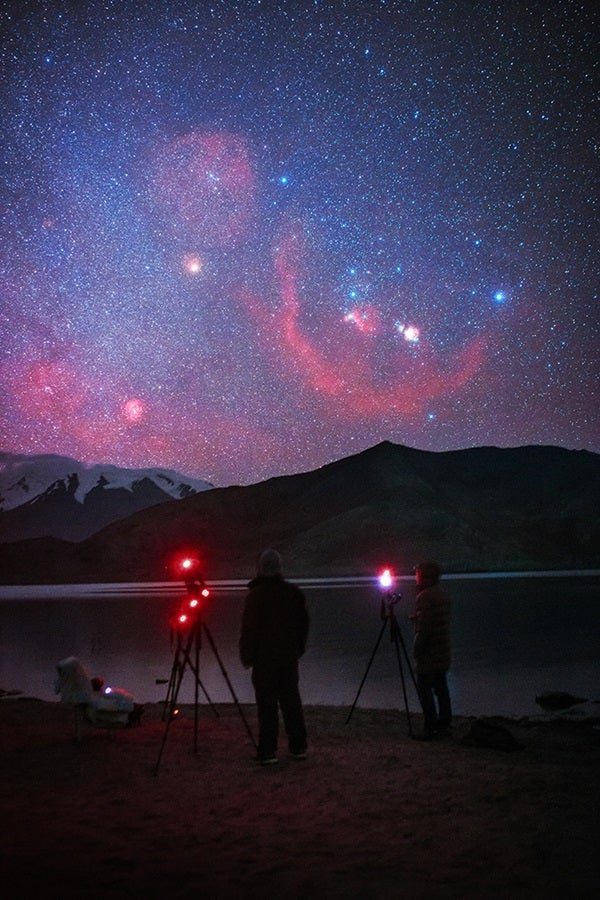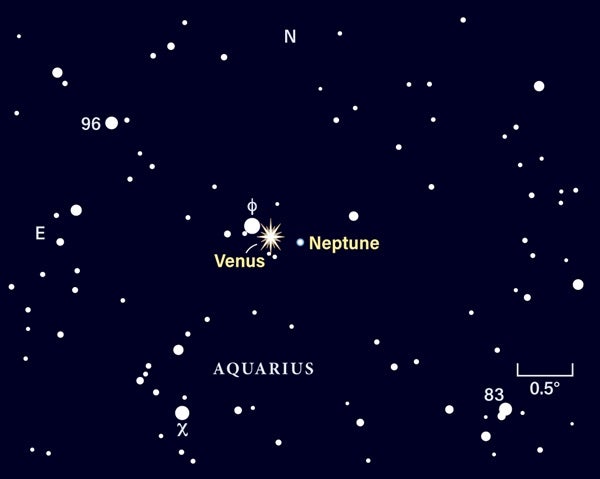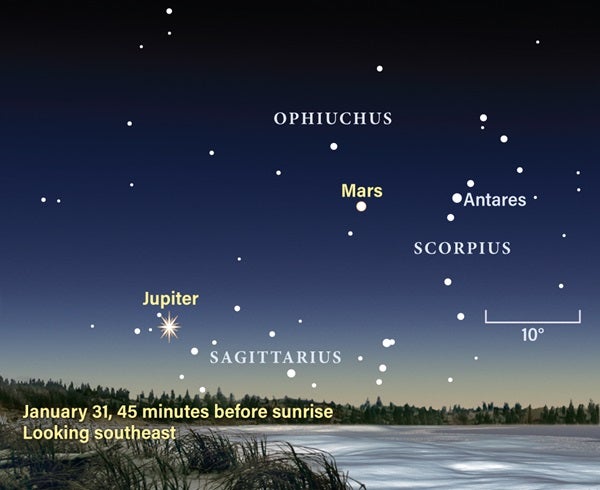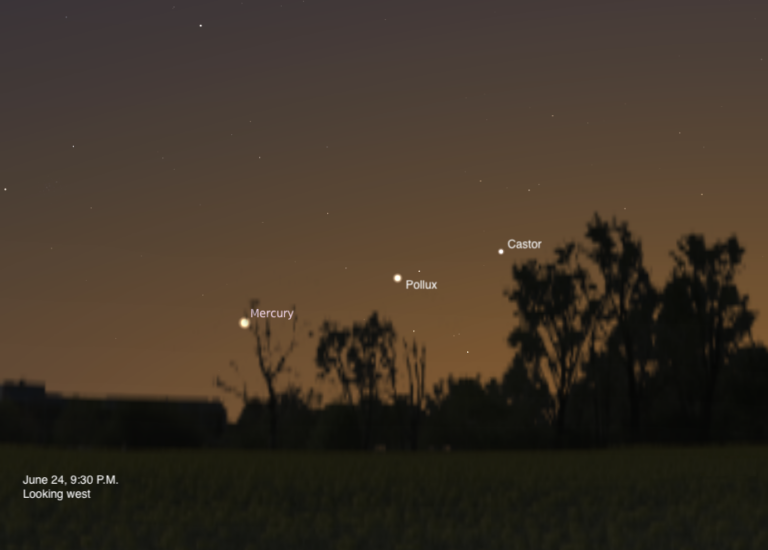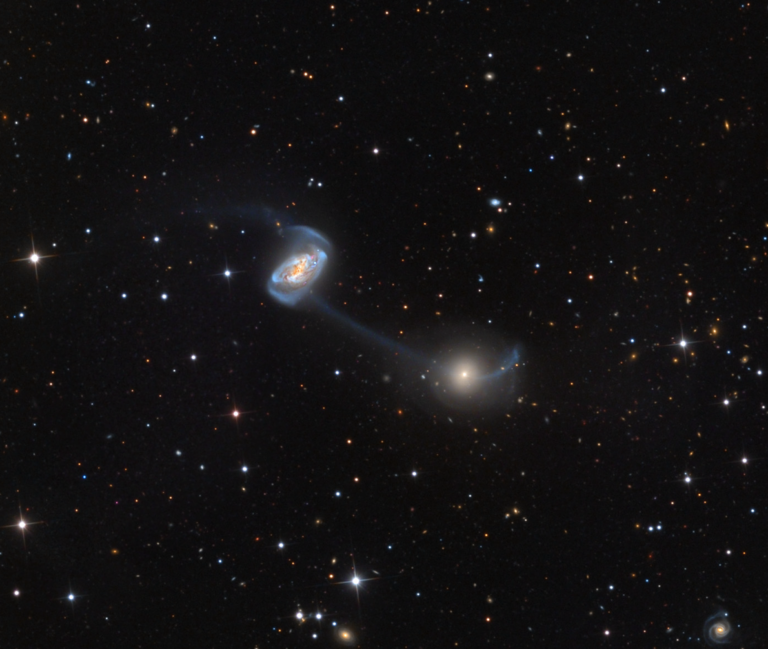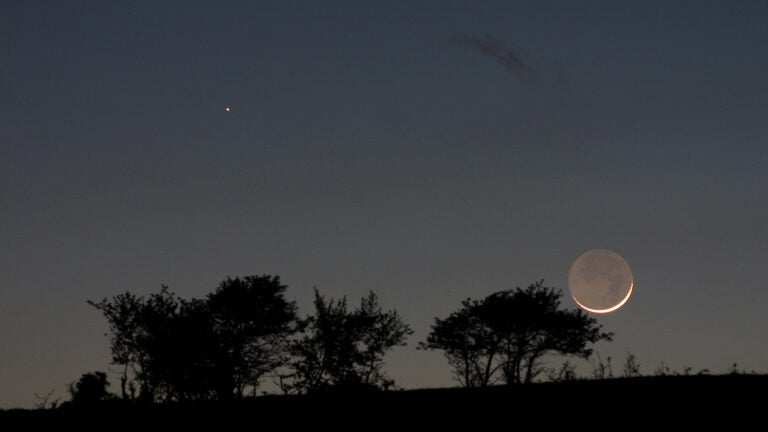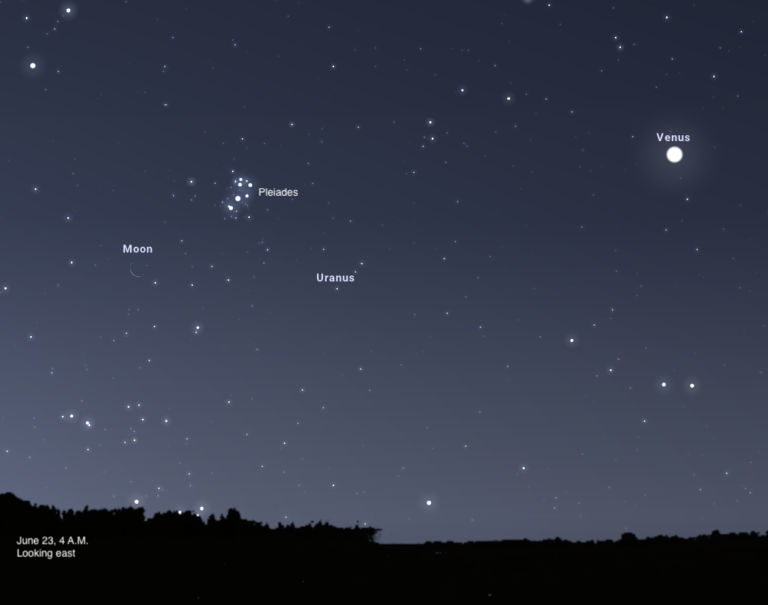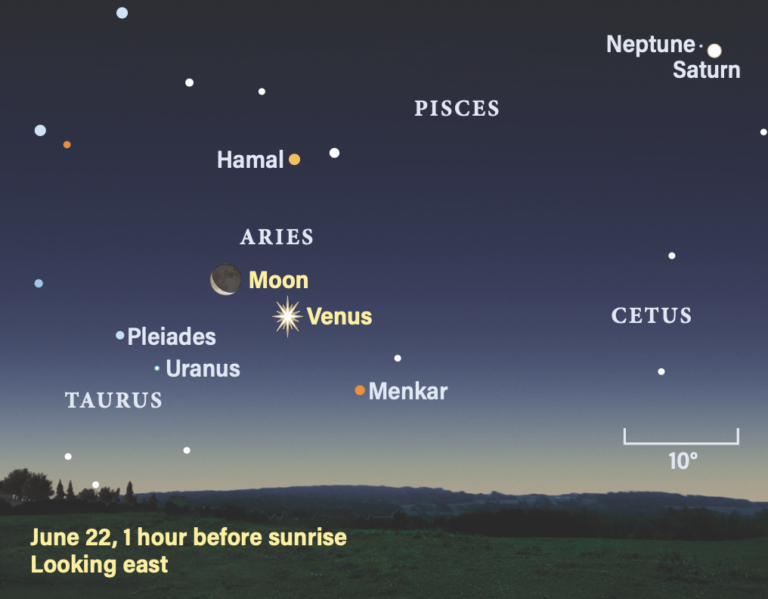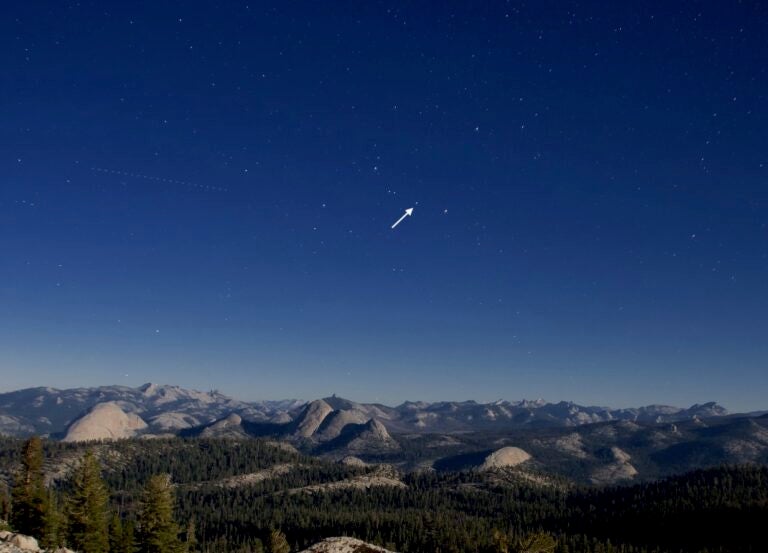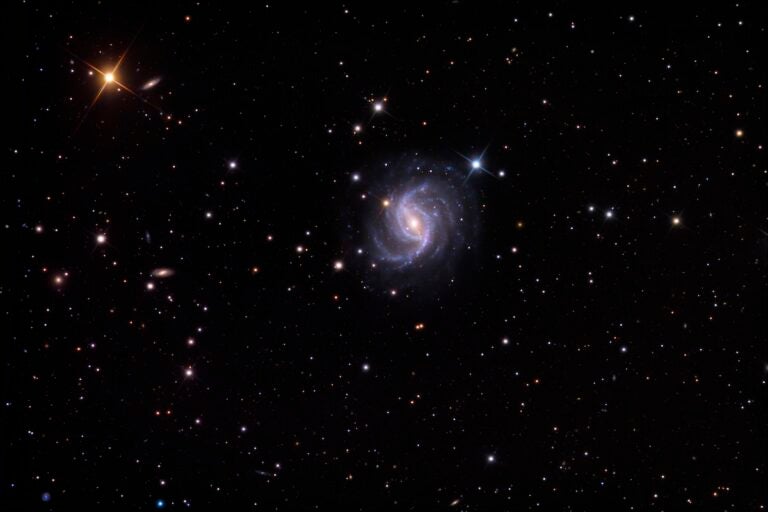One of the sky’s most familiar constellations rules January’s sky from dusk until around 3 a.m. local time. Orion the Hunter appears conspicuous in the southeast after darkness falls and climbs highest in the south between 9 and 10 p.m. It then stands about halfway to the zenith from mid-northern latitudes. If you’ve watched Orion over the years, you might notice that it doesn’t look quite the same now. Ruddy Betelgeuse, which marks one of the Hunter’s shoulders, currently glows near magnitude 1.5. This is about a magnitude fainter than usual and noticeably dimmer that Aldebaran in neighboring Taurus, a star that Betelgeuse normally beats handily. Astronomers are still trying to figure out why this known variable star has dimmed to its faintest level in more than a century.
New Moon occurs at 4:42 p.m. EST. At its New phase, the Moon crosses the sky with the Sun and so remains hidden in our star’s glare.
Saturday, January 25
Mercury returns to the evening sky this week. If you have a sharp eye, a clear sky, and an unobstructed horizon toward the west-southwest, you should be able to glimpse it through binoculars. For observers at mid-northern latitudes this evening, it lies just 2° high 30 minutes after the Sun goes down. Fortunately, you’ll have some help spotting it: A wafer-thin crescent Moon appears just 2° to the left of the magnitude –1.1 planet. You’ll have only about 10 minutes to catch them before they sink out of sight. Conditions for viewing Mercury improve markedly as the week progresses. That’s because the innermost planet gains nearly 1° of altitude with each passing day if you observe at the same time relative to sunset.
Sunday, January 26
This evening, Venus serves as a guide to the solar system’s outermost major planet, Neptune. Because the distant world glows feebly at magnitude 7.9, you’ll need binoculars or a telescope to spot it. Once the sky grows dark about 90 minutes after sunset, target Venus with binoculars or a telescope at low power. Note the 4th-magnitude star Phi (φ) Aquarii 1.4° above it. Neptune lies two-thirds of the way from Venus to Phi. Don’t confuse the outer planet with a slightly brighter star that stands 0.5° to its right. Through a telescope, Venus appears 15″ across and three-quarters illuminated while Neptune shows a 2.2″-diameter disk colored blue-gray. If clouds interfere this evening, don’t despair — the two planets will appear even closer to each other tomorrow night.
Neptune proves even easier to find tonight, when it passes just 5′ north of Venus — the closest approach between these two planets since January 1984. The conjunction occurs at 2 p.m. EST, which places western Europe in the best viewing position. By the time night falls across North America a few hours later, Neptune lies 12′ west of Venus while Phi Aquarii stands a nearly equal distance to Venus’ east-northeast. Although 10×50 binoculars will separate the three objects, Neptune may be a challenge to see in Venus’ glare. A telescope shows the trio much more clearly. As if to draw attention to this extraordinary conjunction, a slender crescent Moon appears 7° below the two planets.
Tuesday, January 28
Uranus reached opposition and peak visibility three months ago today, but it remains a tempting target. The magnitude 5.8 planet appears nearly 60° above the southwestern horizon once darkness falls. The outer world lies in southwestern Aries the Ram, near that constellation’s border with Pisces the Fish and Cetus the Whale. Although Uranus shines brightly enough to glimpse with the naked eye from a dark site, binoculars will help your search immensely. The closest guide star is magnitude 4.4 Xi1 (ξ1) Ceti, which lies 4° to the southeast. A telescope reveals Uranus’ disk, which spans 3.5″ and shows a distinct blue-green hue.
Wednesday, January 29
Ruddy Mars grows more prominent before dawn with each passing week. The Red Planet now rises before 4 a.m. local time and climbs 20° above the southeastern horizon an hour before sunrise. Mars glows at magnitude 1.4 against the backdrop of Ophiuchus the Serpent-bearer, less than 10° east-northeast of its ancient rival, the 1st-magnitude star Antares in neighboring Scorpius. Unfortunately, a telescope doesn’t add much to our view of the planet, revealing a bland disk only 5″ across.
The Moon reaches apogee, the farthest point in its orbit around Earth, at 4:27 p.m. EST. It then lies 251,899 miles (405,393 kilometers) from Earth’s center.
Thursday, January 30
A pair of fine binocular objects are on display during the evening hours this week. The open star clusters M46 and M47 reside a degree apart in the northwestern corner of the constellation Puppis the Stern. The two lie about 12° east-northeast of the sky’s brightest star, Sirius. The western cluster, M47, glows at 4th magnitude and appears as a fuzzy patch sprinkled with several pinpoint stars. Sixth-magnitude M46 shows up as a hazy collection of faint stars that is hard to resolve under most conditions. Although it contains nearly twice as many stars as M47, M46 appears fainter and fuzzier because it lies some three times farther from Earth.
Although Jupiter passed on the far side of the Sun from Earth just a month ago, it has returned to view in morning twilight. The giant planet rises about 90 minutes before the Sun and climbs 7° above the southeastern horizon 45 minutes before sunup. Shining at magnitude –1.9, Jupiter stands out nicely against the twilight glow.
Saturday, February 1
First Quarter Moon arrives at 8:42 p.m. EST. You can find the half-lit orb high in the south as darkness falls and then watch it sink toward the western horizon throughout the evening hours. The Moon spends the evening hugging the border between the constellations Aries the Ram and Cetus the Whale.
Sunday, February 2
Comet PanSTARRS (C/2017 T2) glows at 9th magnitude this week as it makes its way northward along the Milky Way near the Perseus-Cassiopeia border. Tonight, this visitor from the distant Oort Cloud lies 1° northwest of the Double Cluster (NGC 869 and NGC 884) and 1° south of the pretty binocular cluster Stock 2. Although this region of sky remains visible all night, it lies highest in the north during the early evening hours.
For those who believe in folklore, the fate of winter rests on the shoulders of the groundhog. If the furry rodent sticks his head out of his burrow this morning and sees his shadow, we’ll have six more weeks of winter. But if the weather is cloudy, it means spring is right around the corner. What does this have to do with astronomy? Groundhog Day celebrates one of the four so-called cross-quarter days, which mark the midpoints between the solstices and equinoxes. February 2 falls approximately midway between the winter solstice and the vernal equinox.

